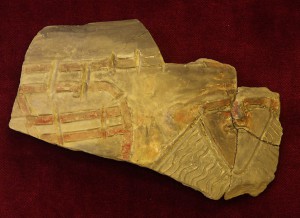
The Prehistory collection of the Budapest History Museum’s Prehistory and Migration Period Department contains more than 500,000 objects.
This rich collection from Budapest and its surroundings contains finds ranging from the Palaeolithic to the Celtic period, spanning nearly 50,000 years.
The earliest, approximately 50,000 year-old archaeological finds, dating to the Middle Palaeolithic, were found during excavations of a settlement of hunters near the city of Érd who specialized in hunting cave bears.
Particularly rich and unique finds of the collection are anthropomorphic vessels depicting human faces from the Middle Neolithic (New Stone Age). These were excavated in settlements of the so-called Transdanubian Linear Band Culture near Budapest (e.g. Növény Street, Biatorbágy, Törökbálint, Kőérberek-Tóváros).
The Middle Copper Age is represented in the collection by finds of the Ludanice Culture, the Stab-and-Drag Pottery Culture and the so-called Protoboleraz Horizon.
Vessels of the Late Copper Age Baden Culture, reflecting its extraordinarily rich variations of pottery designs, were found in larger settlements of the period at Andor Street, Káposztásmegyer and Békásmegyer.
Further highlights of the collection are objects that belonged to the peoples of the Bell Beaker-Csepel Group from the Early Bronze Age. Their settlements lay exclusively along the Danube, in and around the area of modern-day Budapest. The most significant finds came from Albertfalva, Szigetszentmiklós, Csepel and Békásmegyer.
Remains from the Middle Bronze Age Vatya Culture held in the collection include urns from a cemetery discovered in Növény Street, as well as bronze and ceramic objects that were buried for ritual purposes (Rákospalota, Bekásmegyer, Remete-Felső Cave). A sensational find comprising over 100 ritual ceramic vessels from the so-called Tumulus Period, was discovered during the demolition of the Skála department store.
The collection also includes grave goods (‘boot’ vessels, ‘magic tools’, bird-shaped pots etc.) from the Late Bronze Age Urnfield Culture’s unique cemetery in Békásmegyer of Europe-wide significance.
Large-scale excavations on the slopes of Csúcs hill and Kőérberek revealed large and special ’graphite-pattern’ vessels from the Early Iron Age Hallstatt Culture. In Soroksár archaeologists found a cemetery from the Scythian Period.
The most significant pieces from the Late Iron Age Celtic period are the La Tene B-C Period cemetery (on the site of the Csepel sewage treatment facility), and a settlement in the Tabán area of Budapest that survived into the Roman period. Of particular note is the fortified site (oppidum) on the southern slopes of Gellért hill, which was built and inhabited by the Celtic tribe of the Eravisci.
Further information:
The curator of the collection: András Tóth


